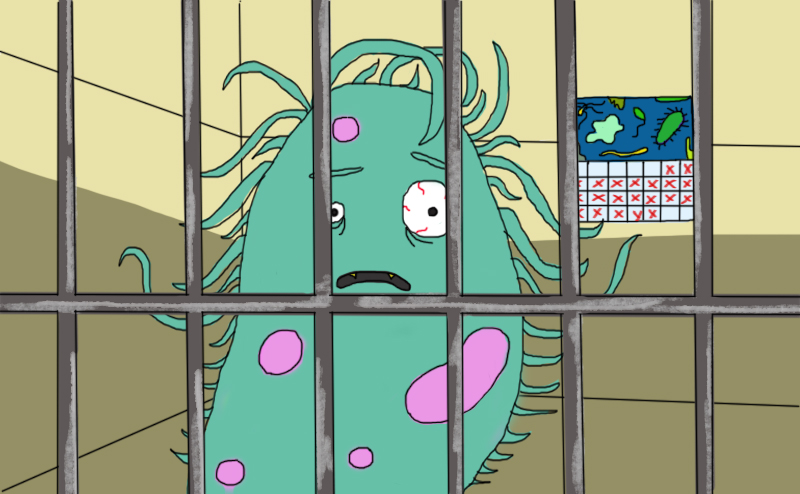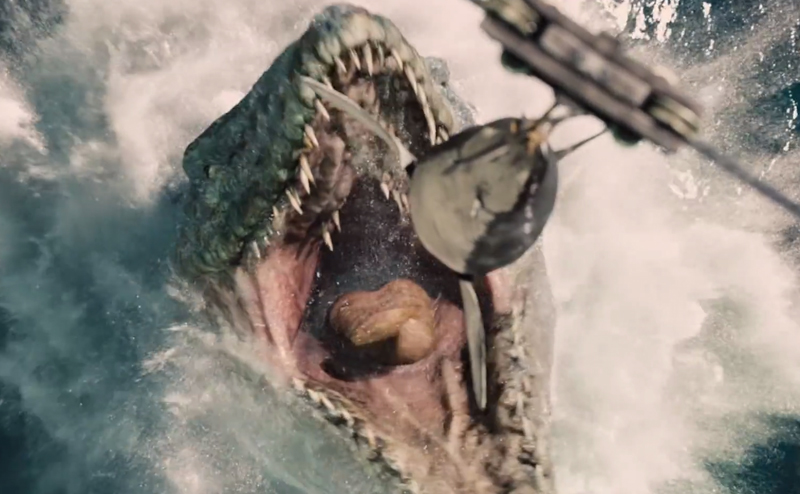Articles
Seven days, lots of science in the news. Here’s our roundup of this week’s most notable and quotable items. Researchers inserted a self-destruct mechanism into genetically modified bacteria that could serve as a “firewall” to prevent GM organisms from escaping laboratories. In couples, healthy habits are much easier to maintain if both partners join in. Two NASA spacecraft—Dawn and New Horizons—are about to give us our best glimpses ever of the dwarf planets Pluto and Ceres. Evolution might be able to retrace its steps: When scientists looked at the progress of birds over generations, they found that they regained a wrist bone that was lost by the dinosaurs. X-rays allowed scientists to peer inside an ancient scroll that had been turned into a charcoal-like brick by the eruption of Mount Vesuvius in 79 AD. NASA is testing ways of sending scientists to explore Mars virtually, through a 3-D-augmented reality visor. Scientists made water droplets bounce off a piece of metal by etching the material’s surface with a laser. There are fish living underneath nearly half a mile of ice in Antarctica. Big trees are disappearing from California. Psychedelics might be a powerful anti-suicide treatment. One species of sea-dwelling snail hunt by injecting their prey with insulin, making …
Read More
While “economy,” “jobs,” and “family” were the most-used, non-generic words in President Barack Obama’s 2015 State of the Union address, according to Mashable, scientific topics got some mention as well. And it got us thinking: How is science doing under Obama’s leadership? And what about the president’s other joint addresses to Congress? What has Obama been saying about science in these speeches, and what actual actions have come out of the sweeping rhetoric? While this is by no means exhaustive, here’s a quick overview.
Read More
Seven days, lots of science in the news. Here’s our roundup of this week’s most notable and quotable items. (Note: Luddites can skip ahead.) Move over, stiff neck; there’s a new spinal problem to reckon with. Doctors are seeing some patients with “text neck”—pain caused by inclining one’s head for long periods of time while staring at a smartphone, thus putting extra stress on the spine. Since 1990, sea levels have risen much more quickly than predicted. You can kill bugs with blue light. Christmas came a little late for the astronauts aboard the International Space Station; a SpaceX Dragon capsule resupplied the orbiting lab in place of the Orion capsule that suffered launch failure back in October. SpaceX had hoped to be able to recover the first stage of the rocket with a drone ship—a big step towards reusable rockets—but the landing was too hard. The ISS also suffered an ammonia leak scare that was probably just a computer failure. A protein involved in animal hibernation could yield insights into fighting Alzheimer’s disease. Kids eat more vegetables and fruits if they eat lunch after recess instead of before it. One species of pitcher plant may naturally adjust the slipperiness of its traps to let scout ants escape—then dine …
Read MoreAre we witnessing a new scientific (and sci-fi) dawn in cinema? Last year, Christopher Nolan’s Interstellar made headlines for its spellbinding black hole visuals—while sparking debates about its scientific accuracy. James Gunn’s Guardians of the Galaxy scored big at the box office, raking in an impressive $94 million in its first weekend while sending Chris Pratt’s career into the stratosphere. And the smaller (but successful) Snowpiercer, Bong Joon-ho’s global-warming-fueled chilling dystopia, married action and allegory to deliver a poignant, satirical disaster movie. Now in 2015, a number of hotly anticipated science-themed films have caught our eye. From thoughtful indie flicks tapping underreported science to whiz-bang, would-be blockbusters tearing through space, and innovative documentaries exploring environmental themes and alien encounters, there’s a whole host of new science-themed films on the horizon (and more Chris Pratt!). Here’s our preview. The Chinese Mayor (Documentary Feature) Director: Hao Zhou Featuring: Geng Yanbo Premiere Date: January 2015 Taking on the topic of pollution in China—an issue that the country’s government has been slow to act upon or even acknowledge—director Hao Zhou spotlights Geng Yanbo, the mayor of Datong, an ancient city that has been experiencing something of a rebirth at his hands. As he struggles to rebuild it, the city’s coal-mining past looms large. The documentary promises to give an introspective …
Read MoreSeven days; lots of science in the news. Here’s our roundup of this week’s most notable and quotable items: We might be able to tell the ages of stars by the way that they spin. Newly described Indonesian amphibian Limnonectes larvaepartus gives birth to live tadpoles instead of laying eggs—the only known frog to do so. New images of Martian rock beds from the Curiosity rover show structures similar to ones on Earth shaped by microbes. Insecticide-treated mosquito nets are spurring the rise of hybrid mosquitoes that are resistant to the chemicals. Researchers sequenced the genome of the bowhead whale, which can live for up to 200 years or more, finding genetic adaptations for tumor fighting, DNA repair, and other factors that might lie behind the whale’s long lifespan. A 12-year study of childhood measles vaccines found the shots are safe. Newly discovered antibiotic teixobactin seems to be much harder for bacteria to evolve resistance to. Eight newly discovered exoplanets bring the total number of confirmed alien worlds found by Kepler to 1,004. Monkeys can be taught to recognize themselves in mirrors. A computer program has finally become unbeatable at two-player limit Texas hold’em poker. Fexaramine, a new weight loss …
Read More
The national conversation on climate change is far too politicized to be productive; in this environment, the earnest presentation of facts and studies isn’t bringing the reality of rising seas home to people. Advocates who want to be effective have to get a little more creative…like a growing cadre of artists interested in creating portraits of what’s to come, and what we might lose. Here’s just a small sample of some great art projects trying to give people tools to imagine the unthinkable.
Read More












